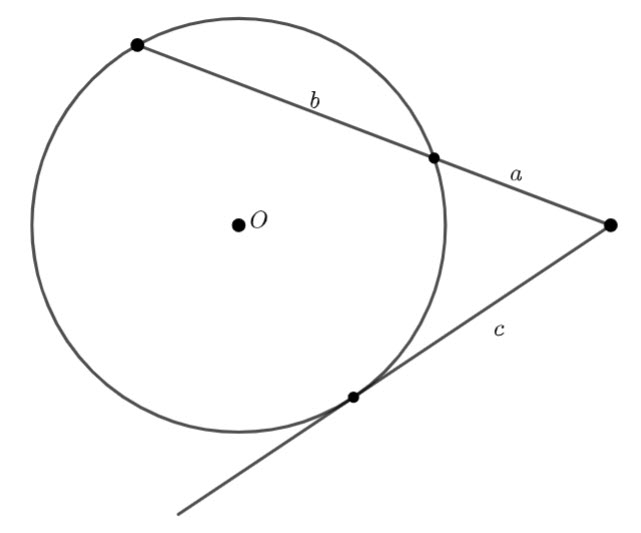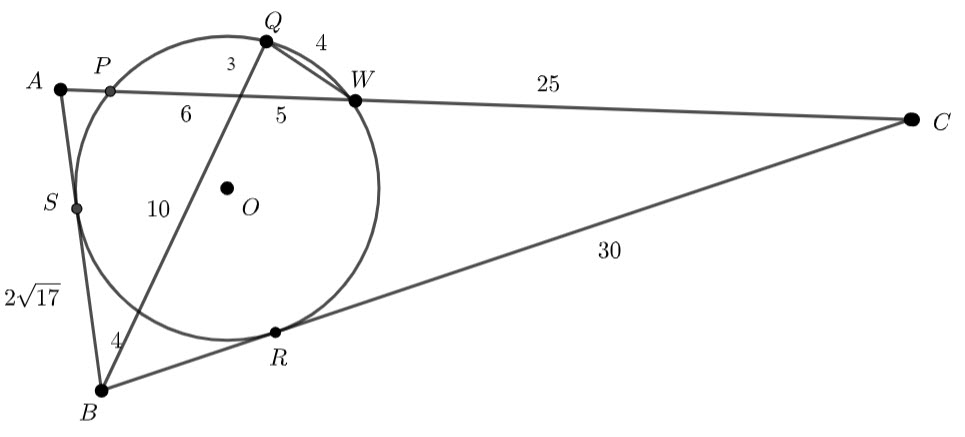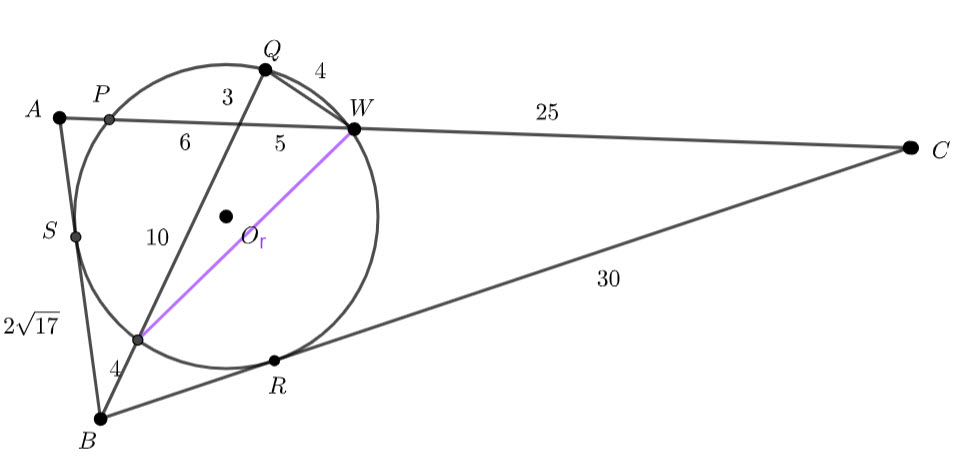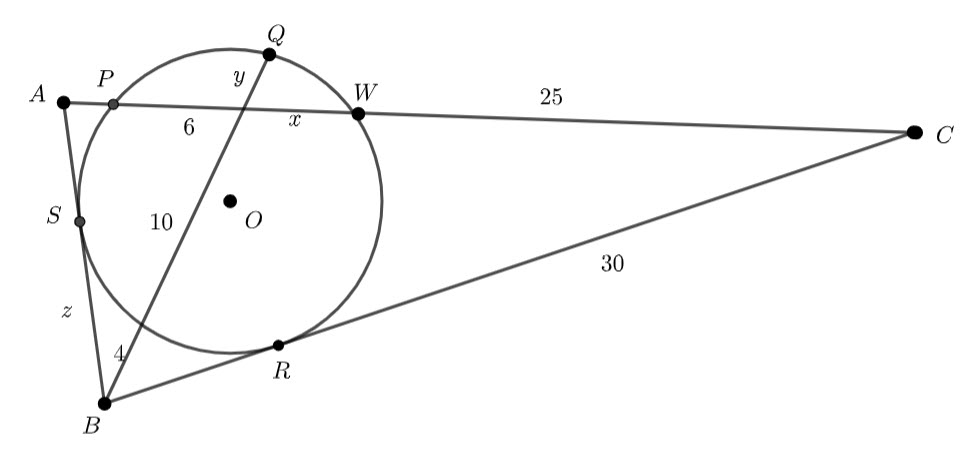One of my Year 11 Specialist students had this question
Triangle
touches the given circle at Points
and
only. The secant
touches the circle at
and
.
Diagram not drawn to scale (a) Determine the lengths of the line segments marked
and
, leaving your answers as exact values.
(b) If the length of the line segment
is 4 units, determine the exact radius of the circle.
(a) We are going to use the Intersecting Secant Theorem – the tangent version


Hence, we have
![]()
![]()
![]()
Then we can use the intersecting chord theorem to find ![]() .
.
![]()
![]()
![]()
Back to the Intersecting Secant Theorem to find ![]()
![]()
![]()
(b)

![]() is part of a 3-4-5 triangle, therefore
is part of a 3-4-5 triangle, therefore ![]()

This is definitely the case of the diagram not being drawn to scale. If ![]() , then the purple line must be the diameter.
, then the purple line must be the diameter.
We can use pythagoras to find the length of the diameter
![]()
![]()
![]()
The radius of the circle is ![]()

